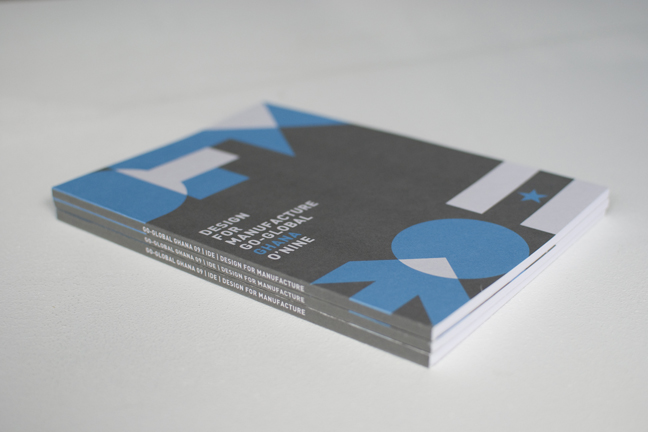
Fourteen of us in the DFM strand made a book for our Ghanaian friends.
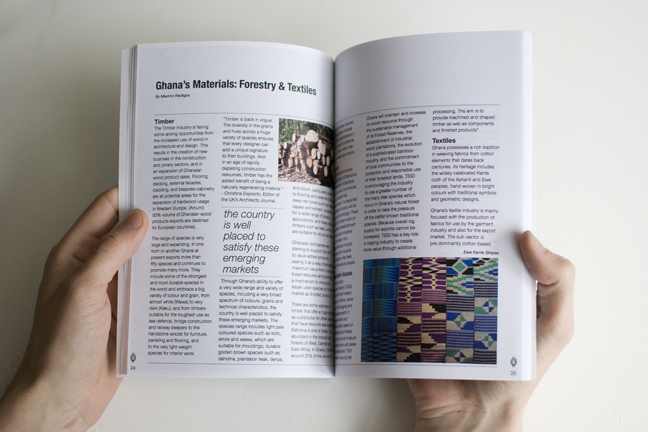
It had the research we prepared for our trip.
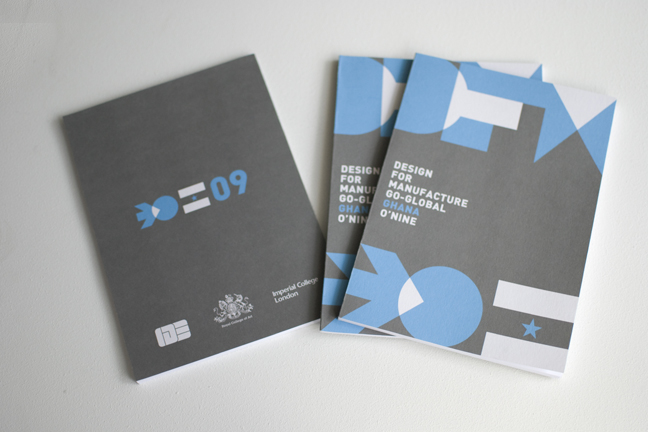
I kept the projecting going strong with my mad InDesign skills that I learned from 3 years working on Southwest Hydrology.
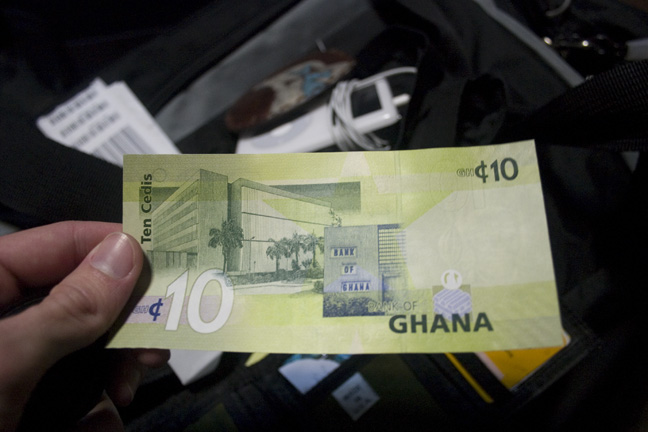
When I got to Ghana I pulled out some Cedis right from the ATM.
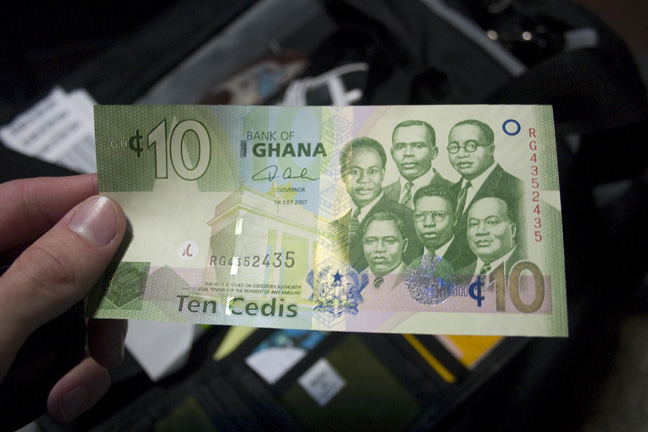
They were crisp and brand new, unlike all the other dirty bills I have seen since.
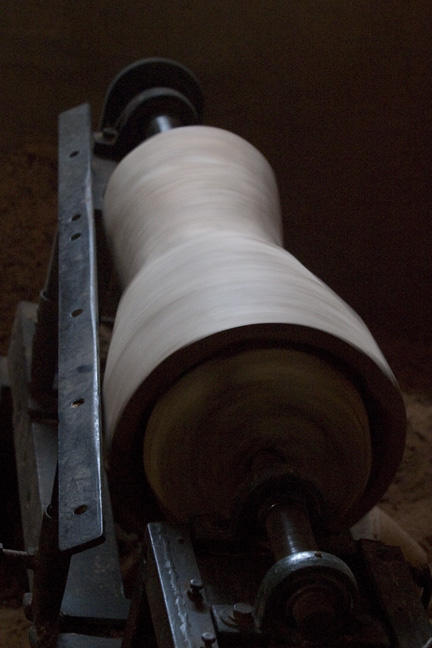
One of our first trips was to small artisan villages in Accra. Jess and I visited some drum makers. This is a drum spinning fast on a lathe.
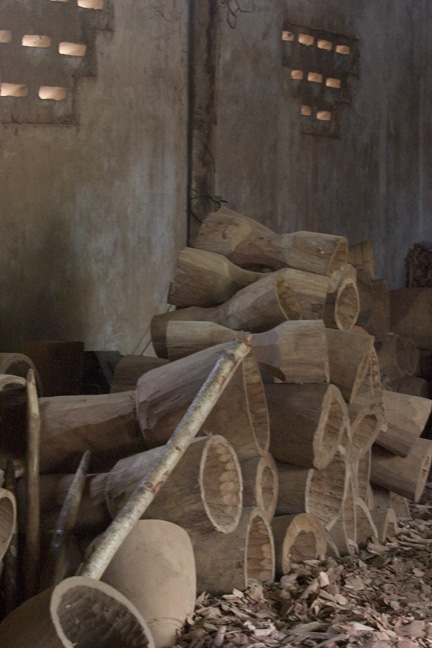
They are rough cut by hand before that stage.
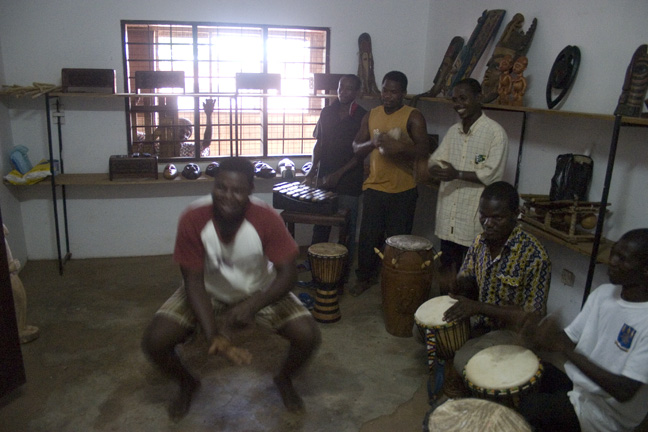
We had an impromptu jam session with dance.
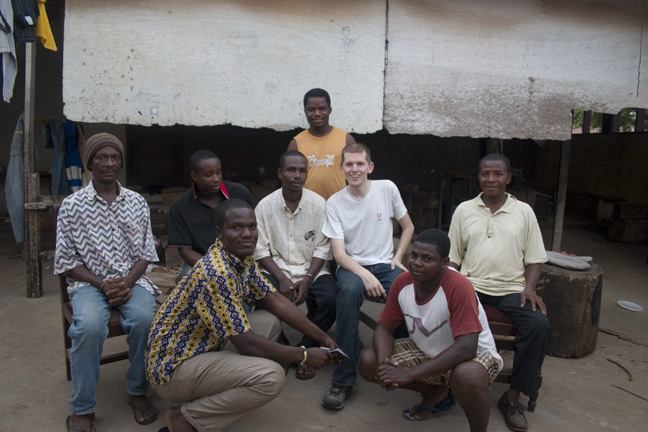
They were really great.
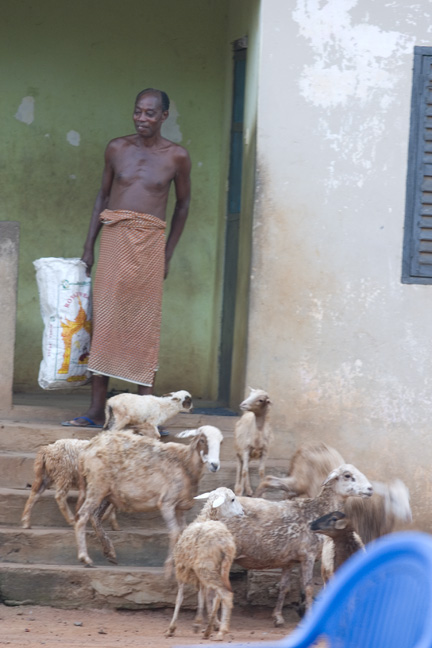
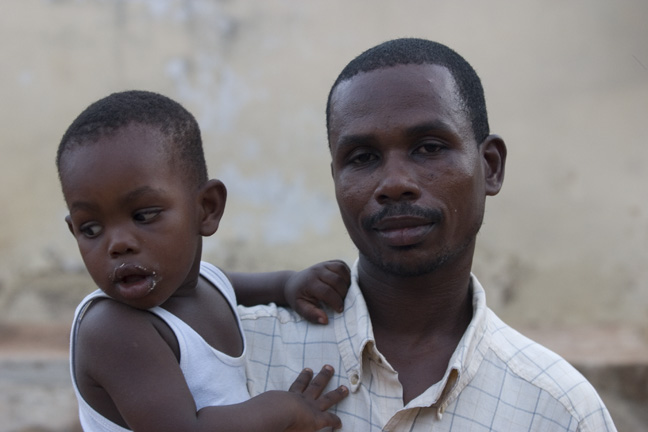
One of the drum makers with his son.

On the road to Kumasi there were large termite hills. You can see a pair of jeans in the hut for size comparison.
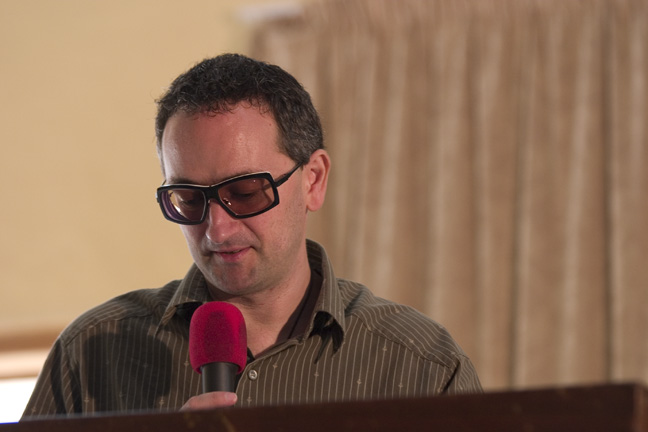
Tom Barker introducing the project during the opening ceremonies.
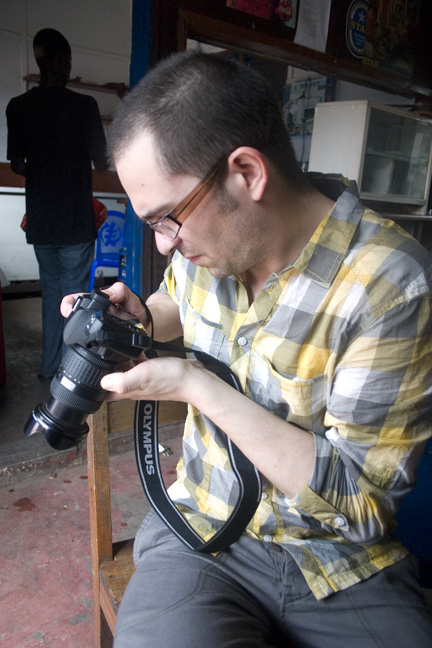
Aymeric and the others have been going DSLR crazy. It’s embarrassing.
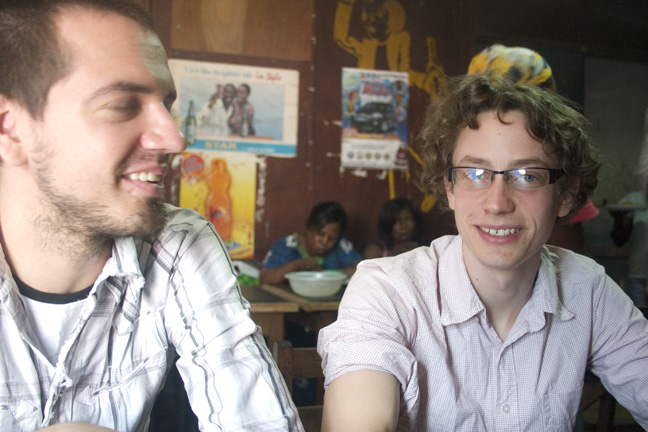
Efrain and Matthew are waiting for their lunch.
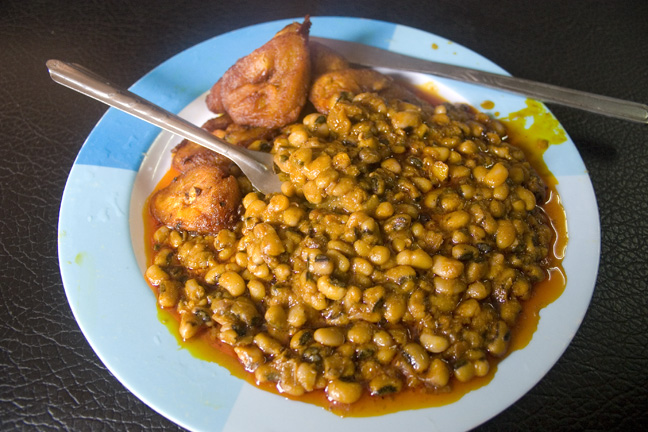
I got a plate of Red Red, an amazing beans and plantain dish. GH¢ 1.50.
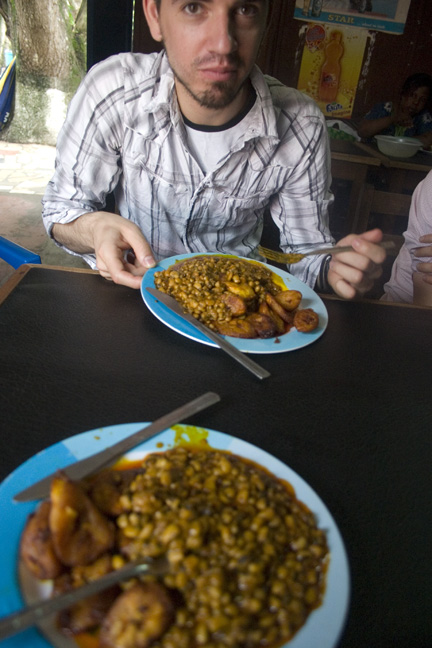
Efrain and I asked for extra beans.
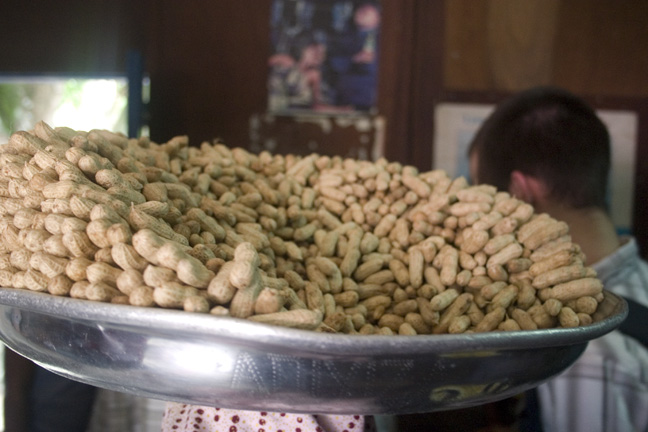
A lady walked by with a tray of neatly stacked peanuts on her head.
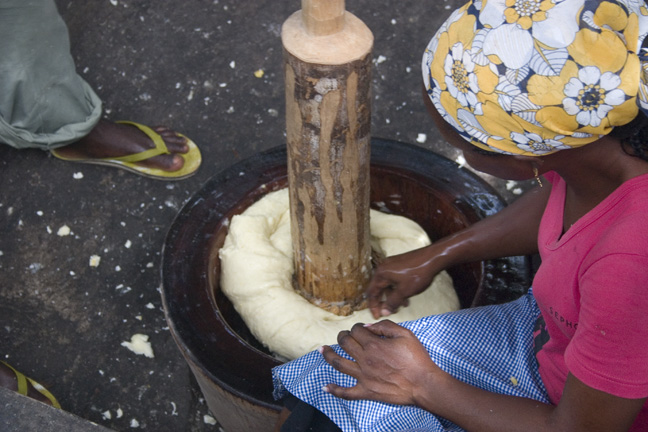
And outside a man and woman prepared fufu.
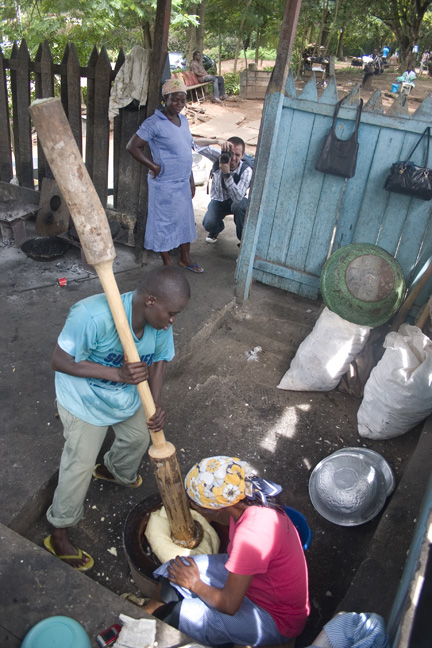
It’s extremely hard work and fun to watch. She gets her hand out of the way just in time.
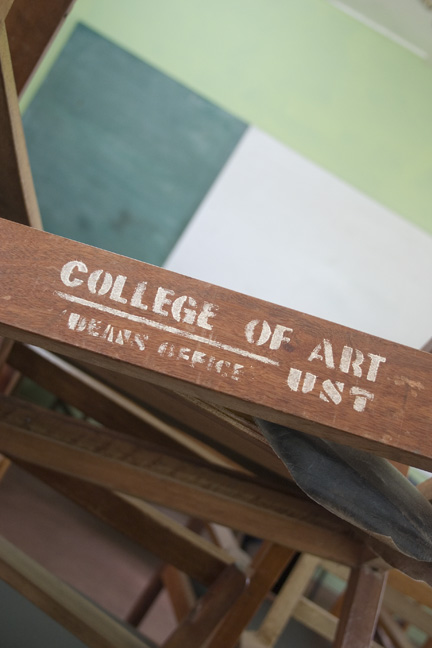
We are working with the KNUST school artists.
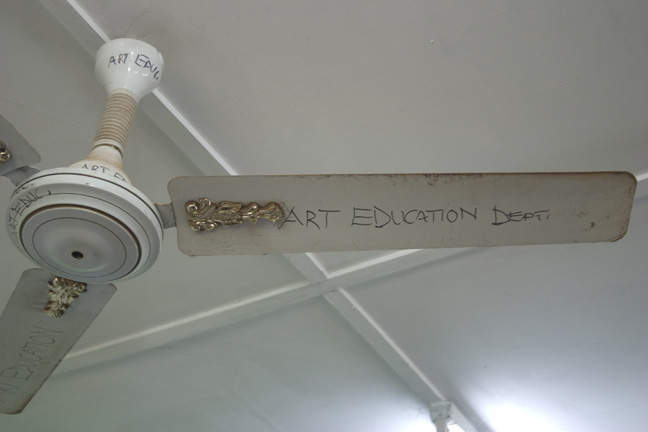
This was the art education room.
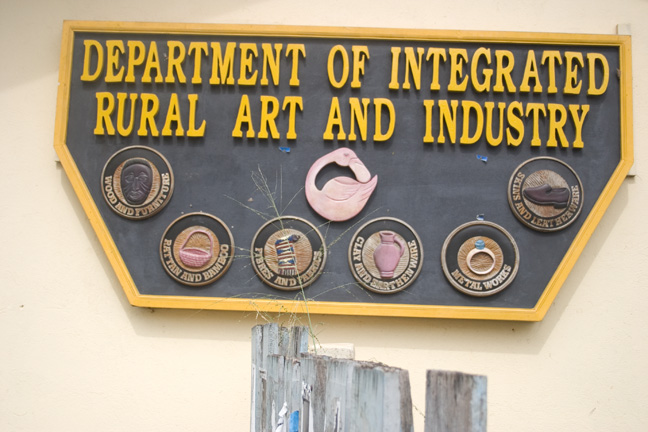
My Ghanian partner, Charles, is studying in this rural art department.
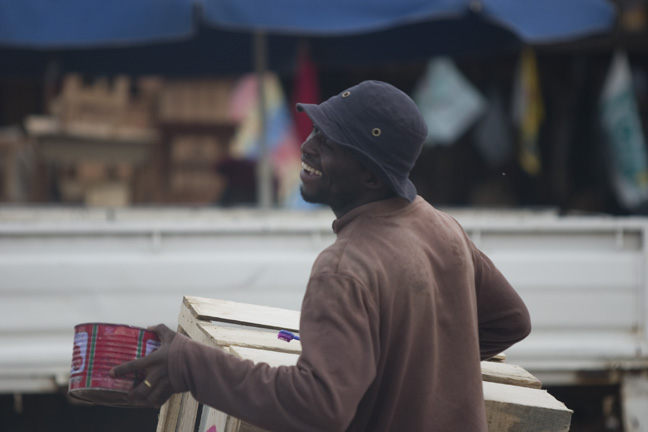
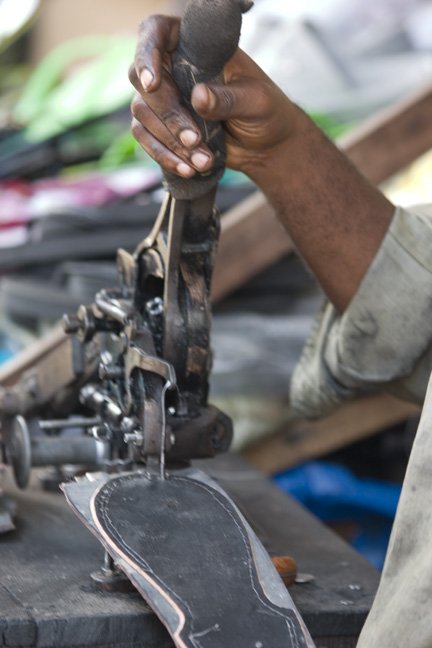
A man punching holes in sandals.
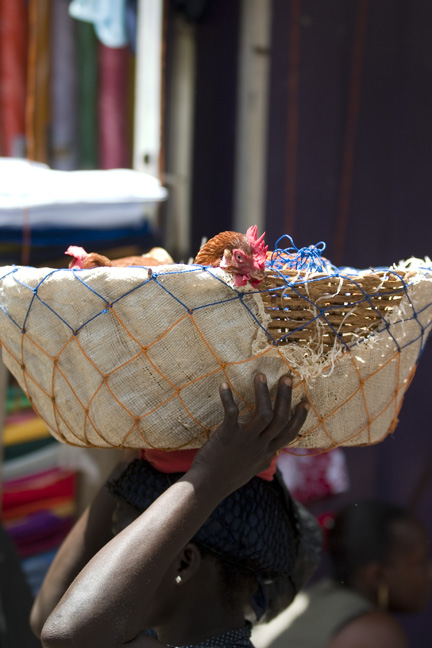
Live chickens carried in the normal way.
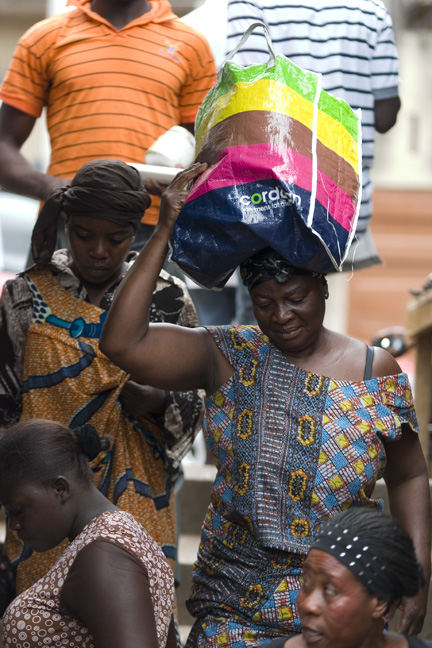
In the Central market in Kumasi.
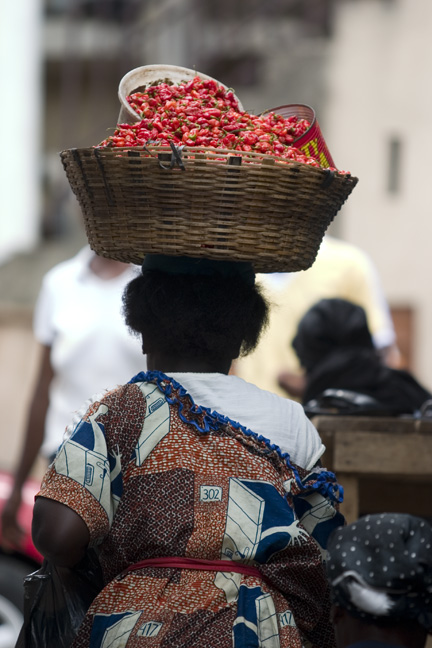
Palm fruit on the go.
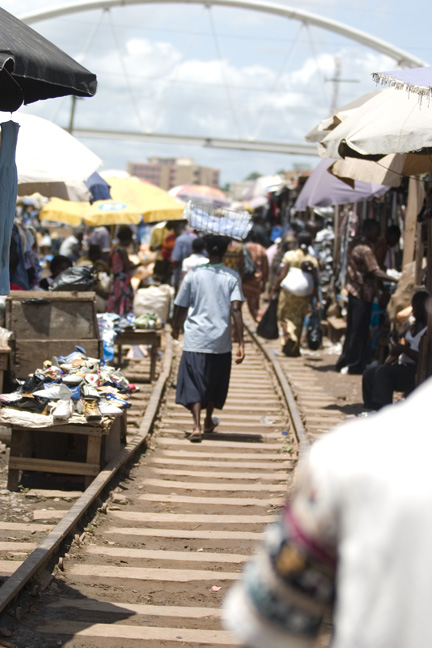
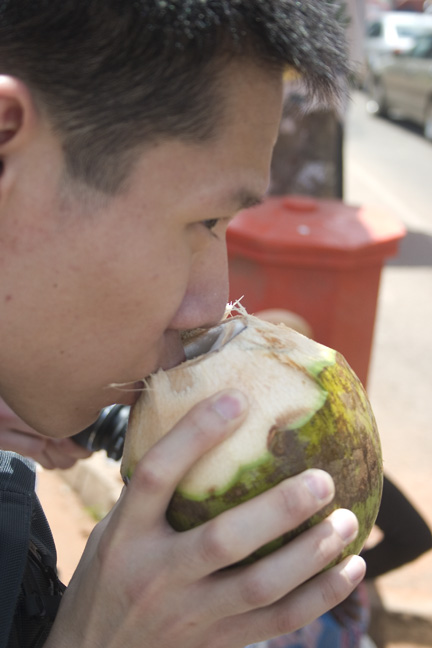
We stop for some fresh coconut water…
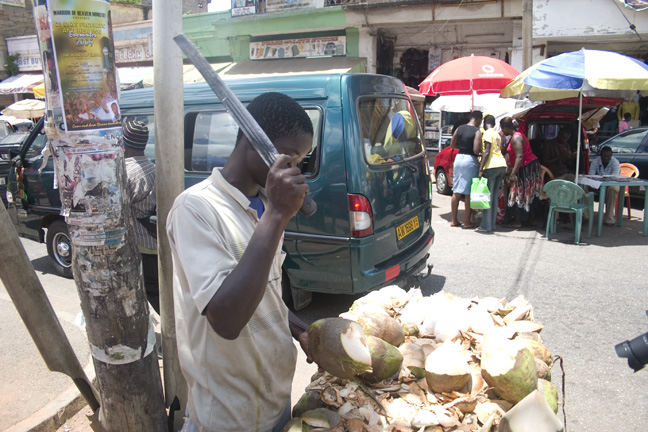
…cut right in front of us. 50 pesewas.
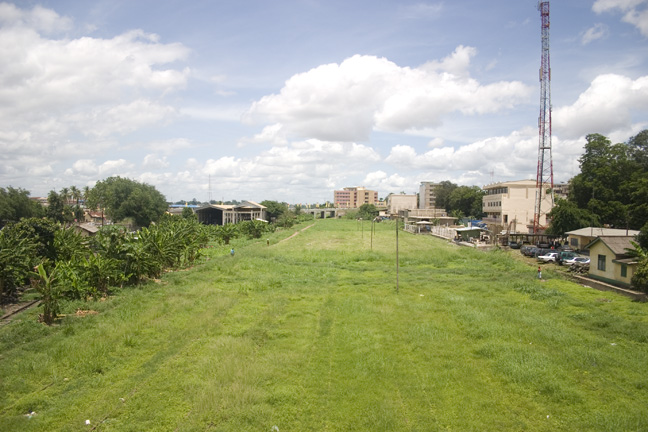
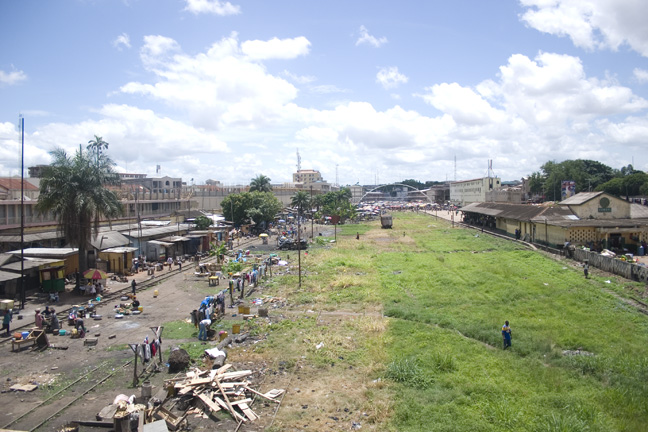
The view from a bridge near the central market.
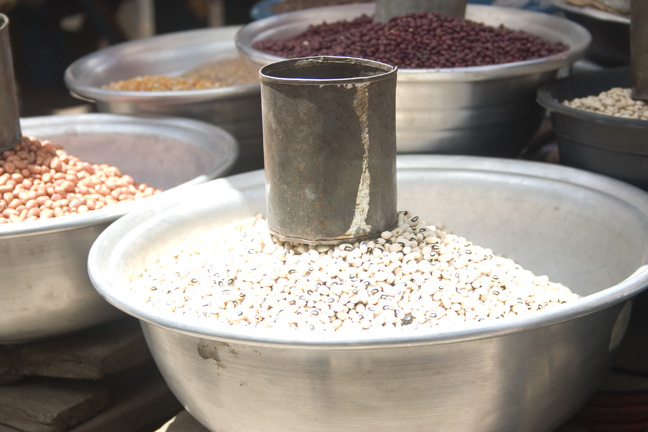
Beans: ingredient number one of Red Red. I have mainly seen black eyed peas used in the meal.
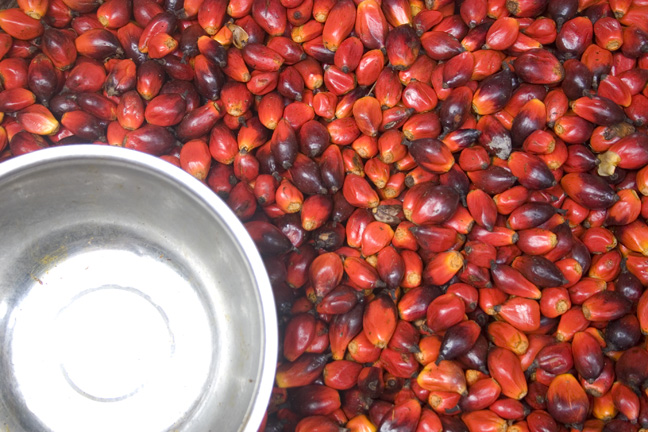
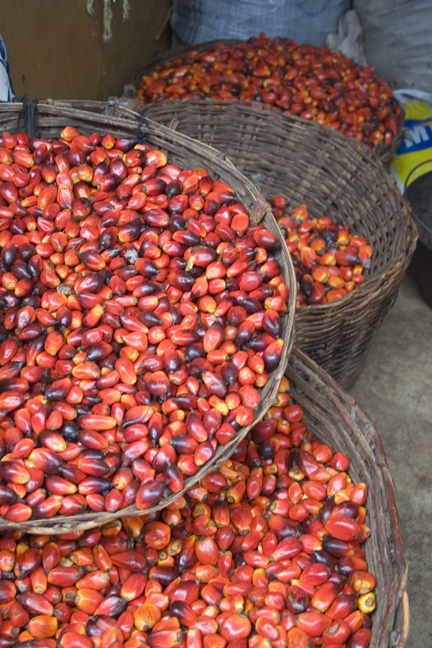
Palm fruit, used to make…
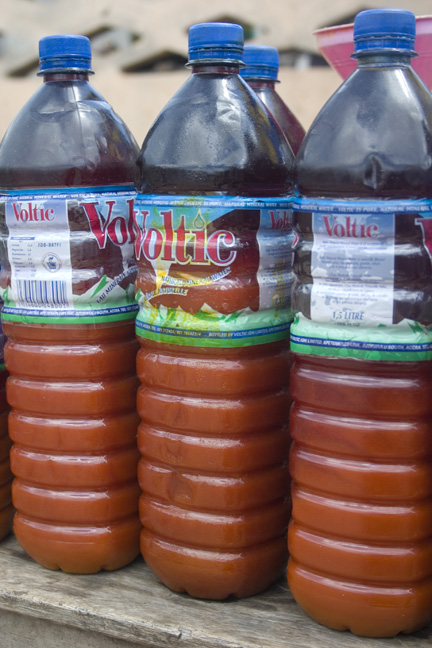
…red palm oil, the first “red” in Red Red, and second ingredient at the market. I didn’t get a picture of the third, gary, which is like a flour made from the calabash gourd.
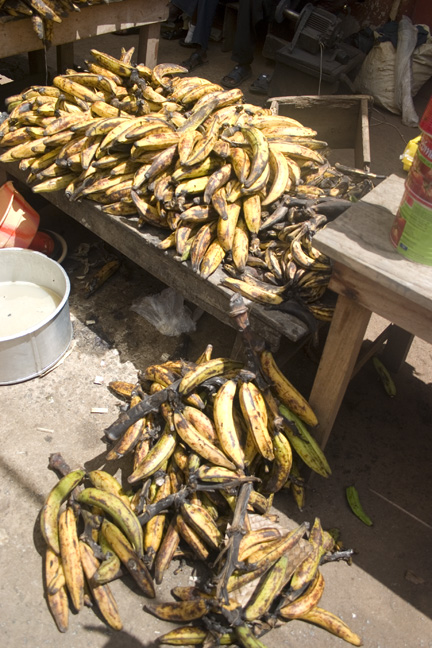
And finally, ripe red plantains, the other ‘red’ in Red Red.
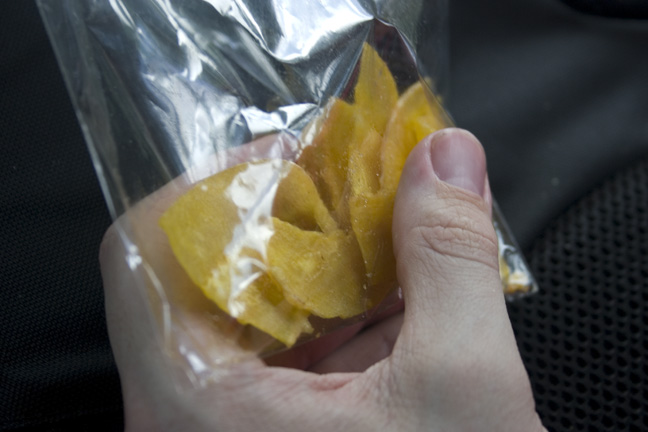
Dried plantain strips are more like potato chips than banana chips.
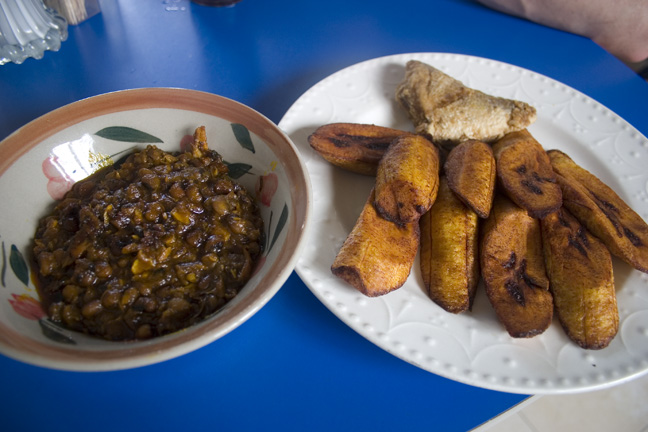
Another plate of Red Red. No surprise there.
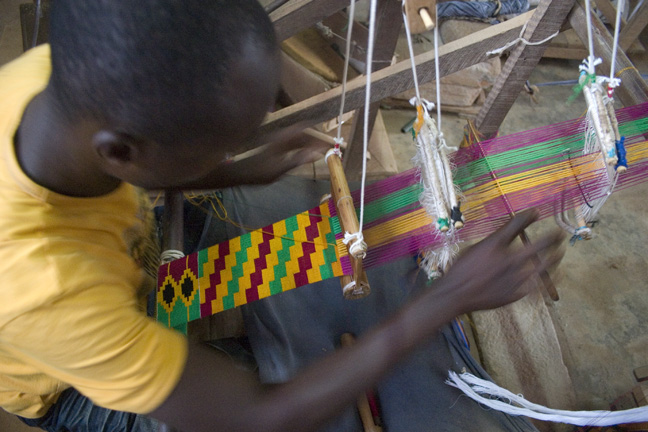
A weaver works on a strip of fabric…
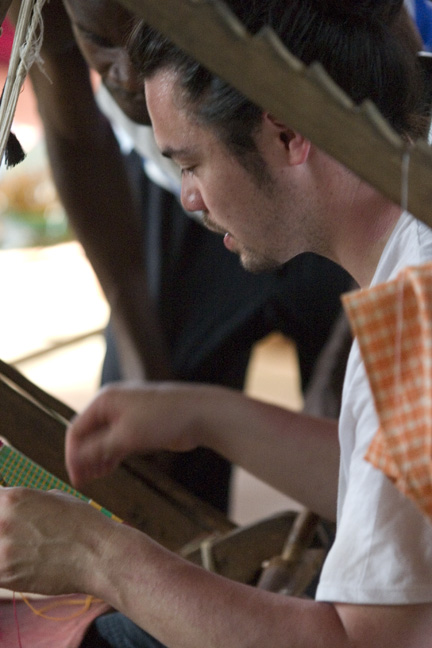
…and Simon gives it a go at another loom.
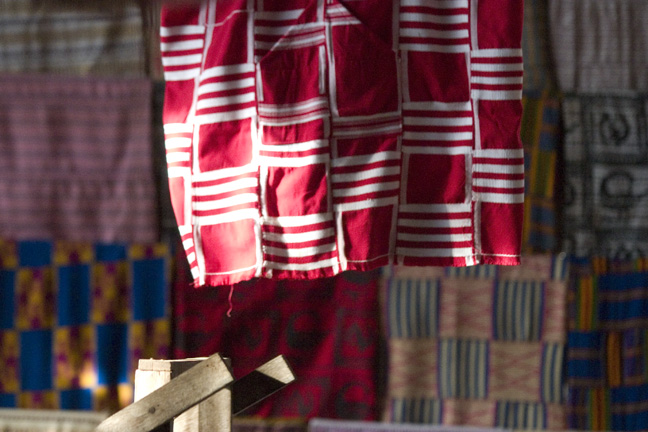
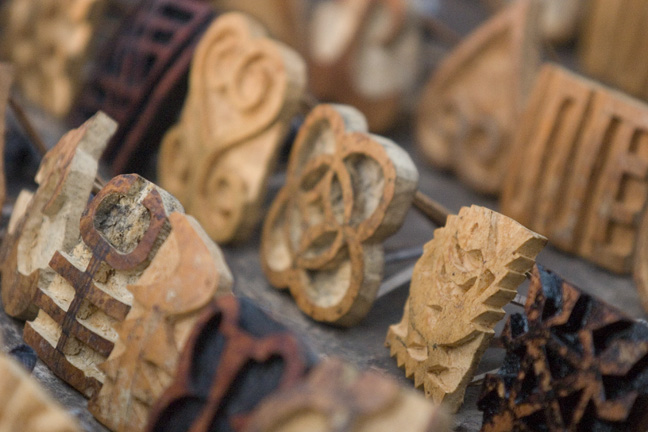
Adinkra stamps from the calabash gourd.
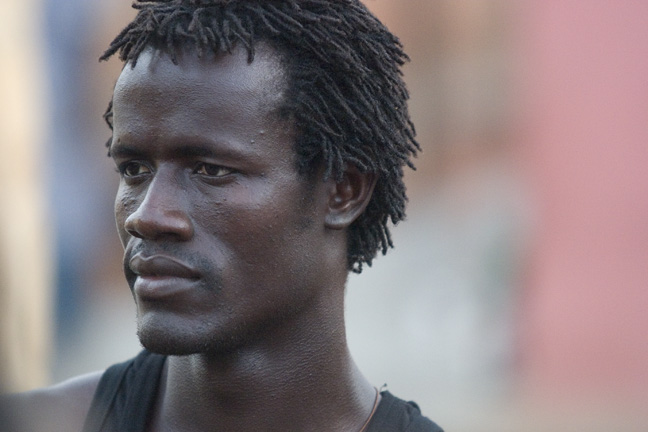
a skilled craftsman who has learned adinkra stamping from his family tells us how they make the ink.
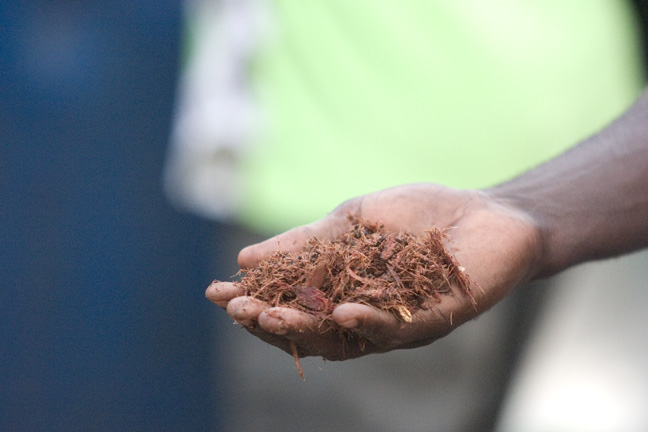
First they grind up a specific tree bark and soak and boil it.
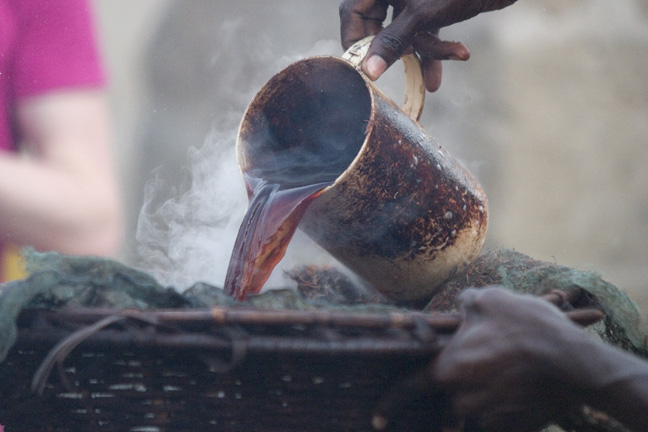
They then strain it.

And it is this dark.
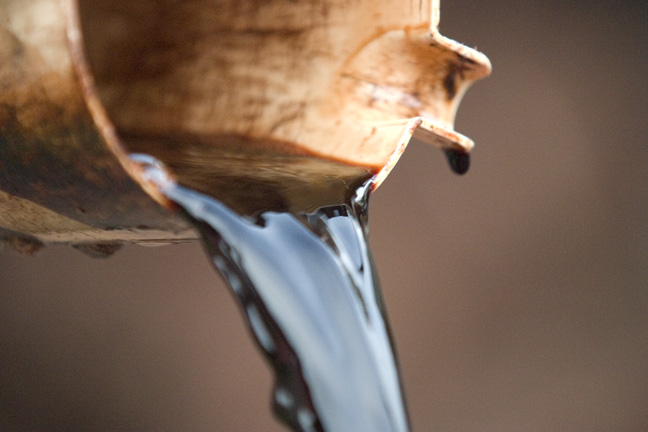
They then let it sit and do a few more things, and it becomes this dark.
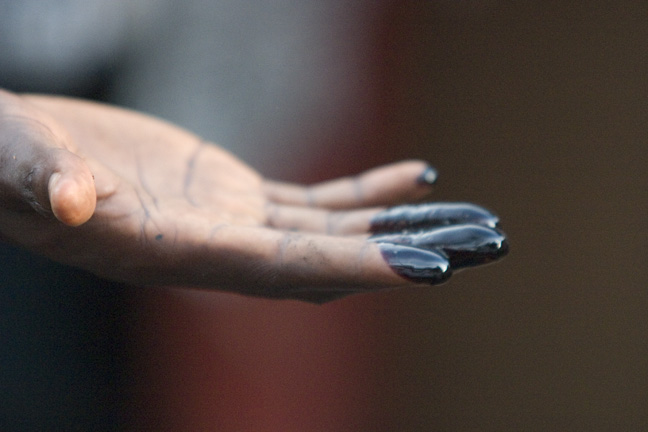
After a while it gets to this darkness and consistency.
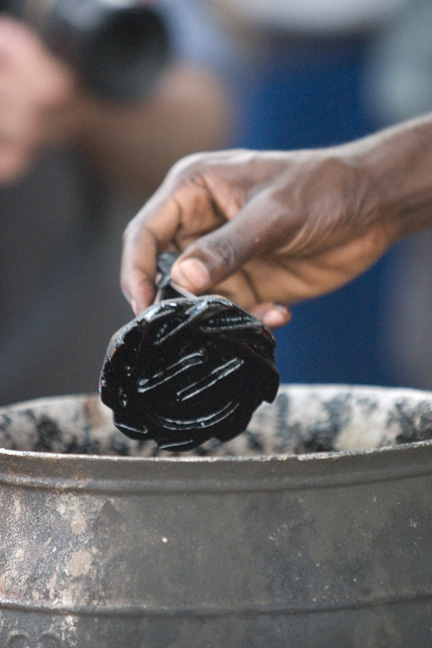
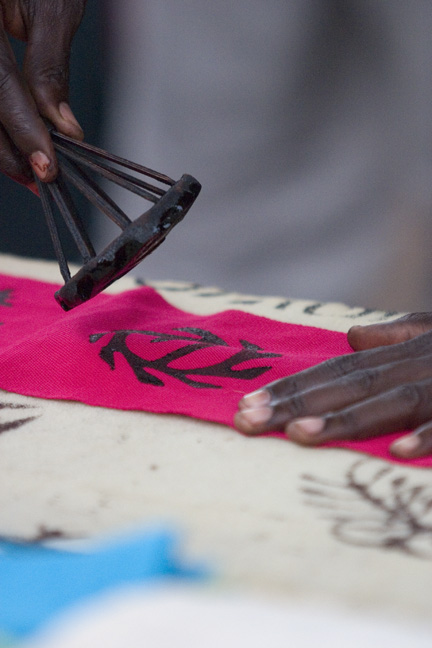
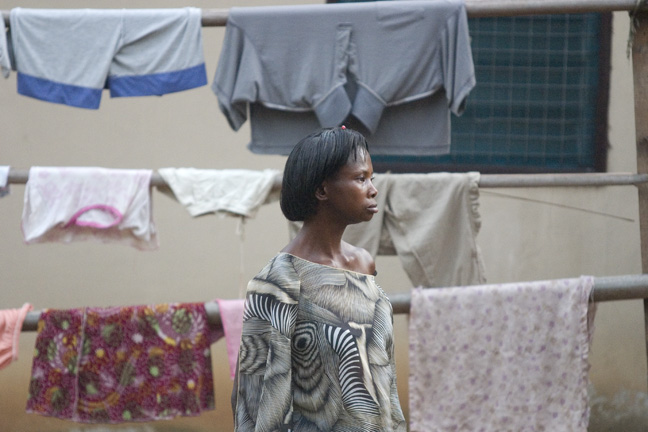
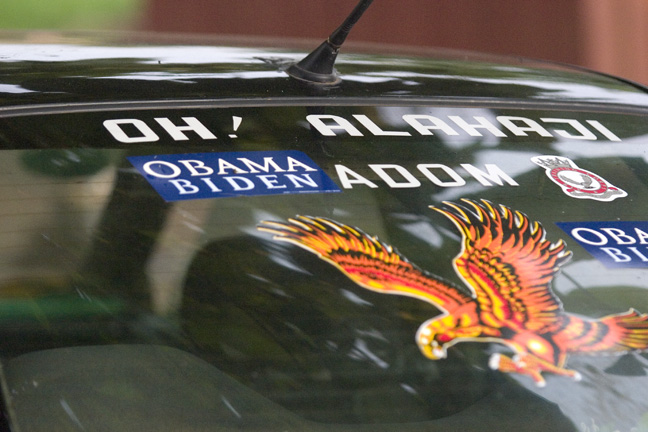
A nice familiar bumper sticker.